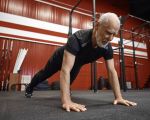- 1-Benefits of Combining Cardio and Weight Training
- 2-Planning Your Workout Schedule for Balance
- 3-Optimizing Performance Through Proper Sequencing
- 4-Fueling and Recovery for Dual Training Sessions
- 5-Common Mistakes to Avoid When Combining Cardio and Strength
- 6-Success Stories of Effective Cardio-Weight Training Combinations
1. Benefits of Combining Cardio and Weight Training
Integrating cardio and weight training offers a powerful approach to overall fitness, providing a range of physical and mental benefits. Cardio exercises such as running, cycling, or swimming enhance cardiovascular health, improve endurance, and burn calories effectively. Weight training, on the other hand, builds muscle mass, strengthens bones, and boosts metabolism.
When combined thoughtfully, these two training styles complement each other by improving heart health while sculpting the body. This combination helps in fat loss, muscle gain, and overall energy levels. Scientific studies show that people who balance cardio and strength training reduce their risk of chronic diseases such as diabetes, heart disease, and osteoporosis.
Beyond physical advantages, this dual approach also fosters mental well-being. The endorphin release from cardio sessions paired with the empowering feeling of lifting weights can enhance mood, reduce stress, and improve sleep quality.
2. Planning Your Workout Schedule for Balance
Successful combination of cardio and weight training starts with creating a workout schedule that balances both modalities without overtraining. Many fitness experts recommend alternating days—such as cardio on Monday, Wednesday, and Friday, with weight training on Tuesday, Thursday, and Saturday—to allow adequate recovery.
Another popular approach is integrating both within the same session, known as concurrent training, but this requires careful management of intensity and duration to avoid fatigue. Your fitness goals should guide your schedule: for fat loss, a greater emphasis on cardio may be appropriate, while muscle gain might prioritize strength training.
Listening to your body and incorporating rest days is essential. Periodic reassessment of your routine ensures it evolves with your progress and lifestyle changes, maintaining both effectiveness and sustainability.
3. Optimizing Performance Through Proper Sequencing
The order in which you perform cardio and weight training exercises significantly impacts your results. Research suggests that if your primary goal is muscle growth and strength, it’s best to perform weight training first when your energy levels are highest. Doing cardio after weight lifting can help burn additional calories without compromising strength gains.
Conversely, if improving cardiovascular endurance is the priority, performing cardio first can maximize aerobic output. High-intensity interval training (HIIT) sessions can also effectively combine both elements by alternating bursts of cardio with strength moves.
Experimenting with sequencing and intensity helps identify what works best for your body and goals. Tracking your performance over time provides insights into how to fine-tune your training for optimal benefits.
4. Fueling and Recovery for Dual Training Sessions
Nutrition and recovery are critical when combining cardio and weight training, as both place demands on your energy systems and muscles. Consuming a balanced diet rich in proteins, complex carbohydrates, and healthy fats supports muscle repair and replenishes glycogen stores used during cardio.
Timing meals and snacks around workouts can enhance performance and recovery. For example, a carb-protein snack before training fuels your session, while a post-workout meal with protein aids muscle recovery.
Recovery techniques like stretching, foam rolling, adequate sleep, and hydration are essential to prevent injury and optimize results. Overtraining without proper recovery can lead to fatigue, reduced immunity, and stalled progress.
5. Common Mistakes to Avoid When Combining Cardio and Strength
One frequent mistake is neglecting rest, which increases injury risk and hinders progress. Overdoing cardio on strength days or vice versa can exhaust your body, limiting gains in both areas.
Another error is failing to adjust intensity and volume appropriately. For instance, performing long, intense cardio sessions immediately before heavy lifting can decrease strength output.
Ignoring proper form or rushing through exercises due to fatigue can cause injuries. Ensuring proper technique and listening to your body is vital.
Finally, some people overlook the importance of goal-specific training and treat all workouts the same, which may lead to suboptimal results.
6. Success Stories of Effective Cardio-Weight Training Combinations
Emily, a 35-year-old working professional, transformed her fitness by combining cardio and weight training. She began alternating running sessions with full-body strength workouts, progressively increasing intensity. Within six months, she lost 20 pounds, gained muscle tone, and significantly improved her stamina.
John, a former athlete recovering from injury, used concurrent training to rebuild endurance and strength simultaneously. His coach tailored sessions with short HIIT followed by resistance exercises. This strategy enabled John to return to competitive form while preventing overuse injuries.
These examples illustrate how combining cardio and weight training, when done with planning and dedication, leads to comprehensive fitness improvements and long-term health benefits.
For those looking to start or enhance their fitness journey, Fitness offers tailored programs, expert advice, and equipment recommendations to support your cardio and weight training goals effectively.








